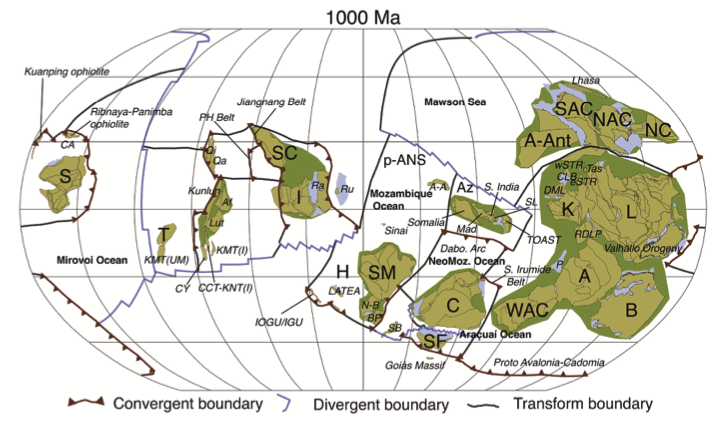Recent progress in plate tectonic reconstructions has seen models move beyond the classical idea of continental drift by attempting to reconstruct the full evolving configuration of tectonic plates and plate boundaries. A particular problem for the Neoproterozoic and Cambrian is that many existing interpretations of geological and palaeomagnetic data have remained disconnected from younger, better-constrained periods in Earth history. An important test of deep time reconstructions is therefore to demonstrate the continuous kinematic viability of tectonic motions across multiple supercontinent cycles. We present, for the first time, a continuous full-plate model spanning 1 Ga to the present-day, that includes a revised and improved model for the Neo- proterozoic–Cambrian (1000–520 Ma) that connects with models of the Phanerozoic, thereby opening up pre- Gondwana times for quantitative analysis and further regional refinements. In this contribution, we first sum- marise methodological approaches to full-plate modelling and review the existing full-plate models in order to select appropriate models that produce a single continuous model. Our model is presented in a palaeomagnetic reference frame, with a newly-derived apparent polar wander path for Gondwana from 540 to 320 Ma, and a global apparent polar wander path from 320 to 0 Ma. We stress, though while we have used palaeomagnetic data when available, the model is also geologically constrained, based on preserved data from past-plate boundaries. This study is intended as a first step in the direction of a detailed and self-consistent tectonic reconstruction for the last billion years of Earth history, and our model files are released to facilitate community development.
![]()

